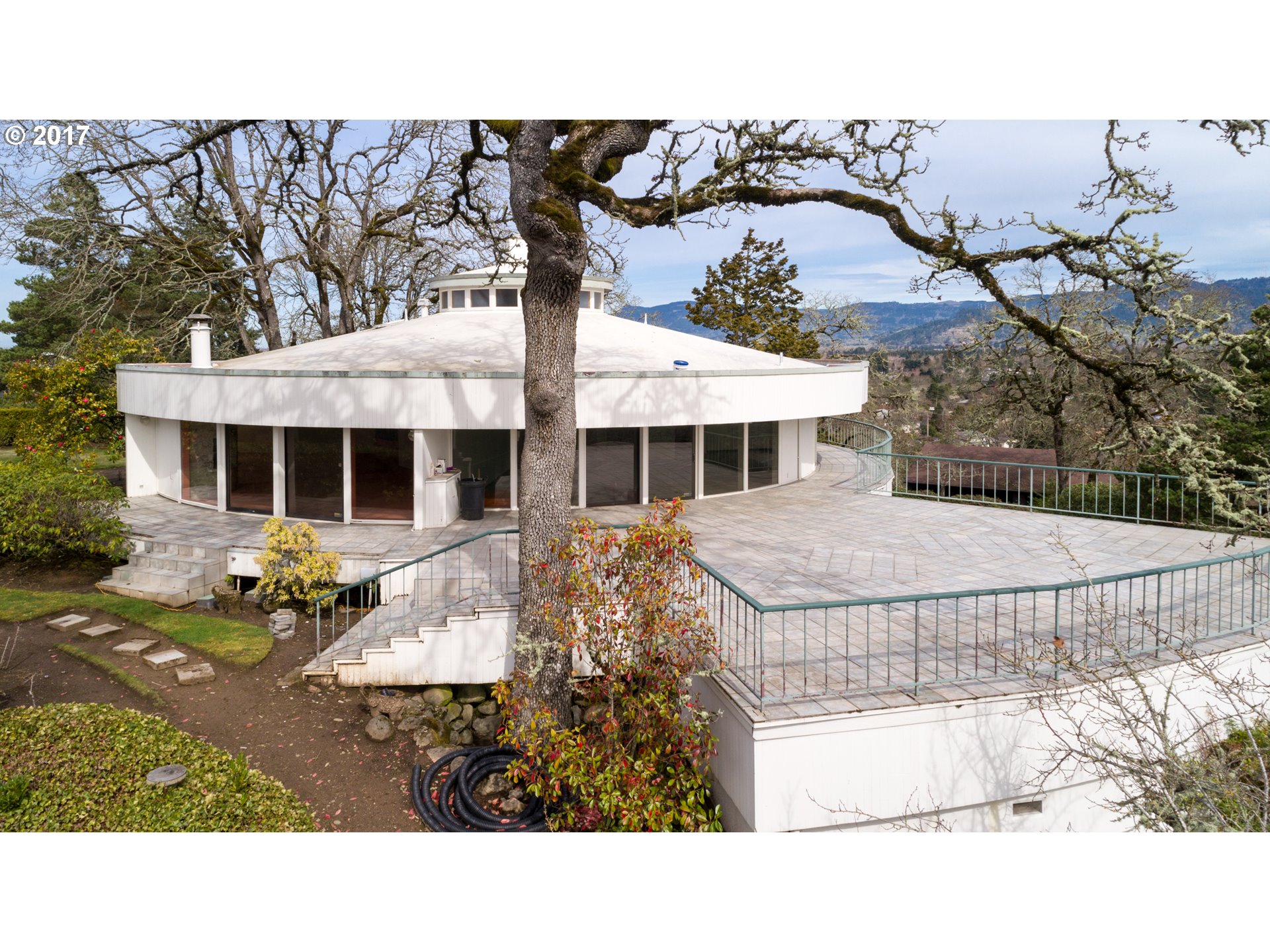Be prepared for jokes. Buy a regular rectangular house and few will comment on the shape. Buy a round house and people will start telling old jokes about “finally getting around to it”, “that’s a long way to go to make sure you don’t paint yourself into a corner”, and “there’s something not right (angled) about that house.” Despite the commentary, round houses make sense especially now.
Think round houses are jokes? Frank Lloyd Wright’s Guggenheim isn’t square. Frank Gehry excels at ignoring straight lines. Visit MoPOP in Seattle for an example on the opposite coast.


The ultimate round-ish house is a Buckminster Fuller geodesic dome, but that’s not the only shape available. A dome is a hemisphere, so both the walls and the ceiling curve around and overhead. But there are also circular homes with vertical walls, octagons, hexagons, and any number of non-square corners that bend back on themselves eventually. Modern materials and methods are making curves easier than flat surfaces, futuristic while also echoing the past.
Buckminster Fuller was an advocate of geodesic domes for several simple reasons. Mathematically, a sphere exposes the least surface area for a given volume. Spheres may be impractical for houses, but a hemisphere exhibits the same benefits. Decreasing the surface area makes it easier to heat because there’s less exterior to radiate it away. In contrast, corners in conventional rectangular rooms act as radiator fins. Spheres are structurally stabler, that’s why they’re used for deep submarines or radar covers in regions with extreme weather.

Spheres are hard to build, but Buckminster leapt past that issue with an innovation that made construction easier than conventional houses. Instead of a sphere, he used a repeating pattern of triangular panels that approximate a continuous curve. Designed right, all of the panels have the same shape enabling mass production and easier installation. Geodesic homes continue to be a contender with that other easy and structurally efficient vacation home choice, the A-frame (which, ironically, is like one enormous radiator fin – but they do shed snow nicely.)
Round walls come with a decorating challenge. The round-ish ceilings of domes makes it more difficult to add extra floors, or add height without adding twice as much width. One solution is to limit the curvature to one dimension. Make the walls vertical, but instead of making right angled corners (90 degrees), go octagonal for eight-sided buildings (135 degrees), or hexagonal for six sided buildings (120 degrees). There aren’t many pentagonal buildings, but it has been done – though not for energy, structure, or construction efficiency.

Vertical walls marching around a central point encourage a conical roof. One of the characteristics of such interiors is a constant reminder of the nature of the house. Exterior walls display the curvature. Exposed ceilings in every top floor room point and climb to a common middle. Play with the idea and break free from every room looking like a boring box. Some show off the ceiling construction with clever paneling. Others use the opportunity to drape fabrics, softening the space.

Fitting furniture becomes an issue. Does a square chair fit into a round room? Of course it can. But, does it look better to have curves instead? Personal choice. The more angles, the shorter the straight wall sections are, results in taking more care in placement. Fortunately, furniture doesn’t have to live beside a wall. Cabinets, however, tend to. Expect custom cabinetry in the kitchen, and along any exterior wall. The radial walls are easier to deal with because they tend to be straight making it easier to buy conventional furnishings.
That conical roof works well with the current trend towards metal roofing. Long straight panels arrayed as an umbrella are a natural choice. There may be more seams than on a conventional roof, but there may be less surface area because the peak is only a point instead of a long ridge.
A conical roof can conjure images of a grain silo, which may be the inspiration for a new trend in houses: silo homes. Not the missile silo homes, though that’s a thing, too. Pragmatic and creative people are taking the lessons of round houses, modern materials, and modern techniques to use the efficiency of grain silos as the basis for houses. The angles are gone because the walls are truly circular. The construction techniques were well-established, tested, and proven by farmers across every climatic zone.

Or, tap into that other modern trend of 3-D printing houses. One of the most storied successes was a round house built by a radial robot in about a day for about $10,000. With robots and 3-D printing, almost any curved shape is producable.

The idea of round houses isn’t new. Look back far enough and find nomadic peoples relying on yurts and teepees. They needed shelters that were light, easy to erect, able to withstand weather, and comfortable enough for families in harsh conditions. The furniture requirements were a bit different and they didn’t have to worry about local zoning codes, but they were solutions to a basic problem every human faces. They invented the idea. Our society deviated from it for several centuries of rectangular housing, but now, look what we’ve coming back around to. (See the puns are inevitable.)
